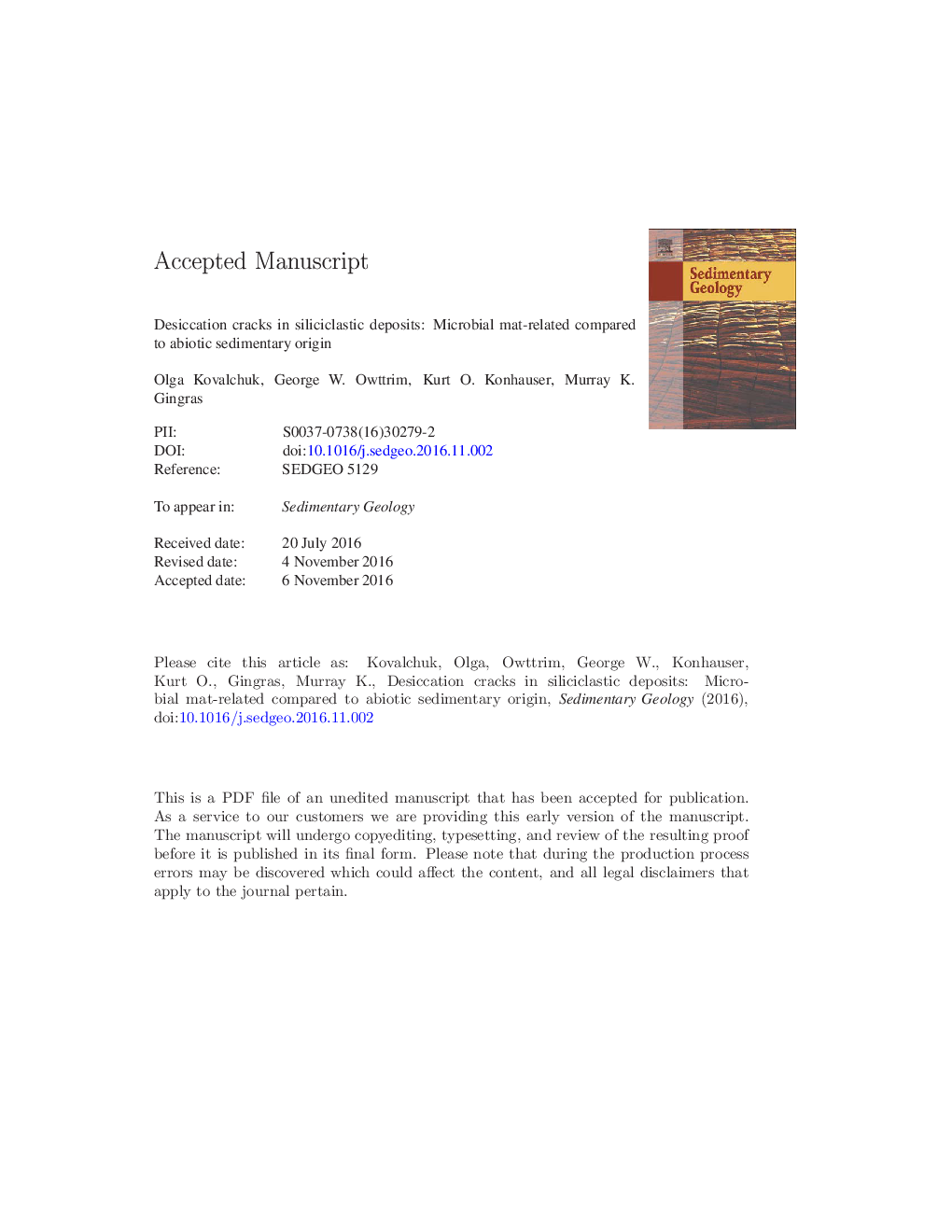ترجمه فارسی عنوان مقاله
ترک های خشک شده در رسوبات سیلیکات: مواد ماتریکس مایع نسبت به منشا رسوبی آبیوتیک
عنوان انگلیسی
Desiccation cracks in siliciclastic deposits: Microbial mat-related compared to abiotic sedimentary origin
| کد مقاله | سال انتشار | تعداد صفحات مقاله انگلیسی |
|---|---|---|
| 140602 | 2017 | 44 صفحه PDF |
منبع

Publisher : Elsevier - Science Direct (الزویر - ساینس دایرکت)
Journal : Sedimentary Geology, Volume 347, 1 January 2017, Pages 67-78
ترجمه کلمات کلیدی
مات میکروبی، خشک شدن ترک ها، الگوی کراک، رسوب سیلیکات، سازه های مربوط به مات، خشک کردن تجربی،
کلمات کلیدی انگلیسی
Microbial mat; Desiccation cracks; Crack pattern; Siliciclastic sediment; Mat-related structures; Experimental desiccation;

